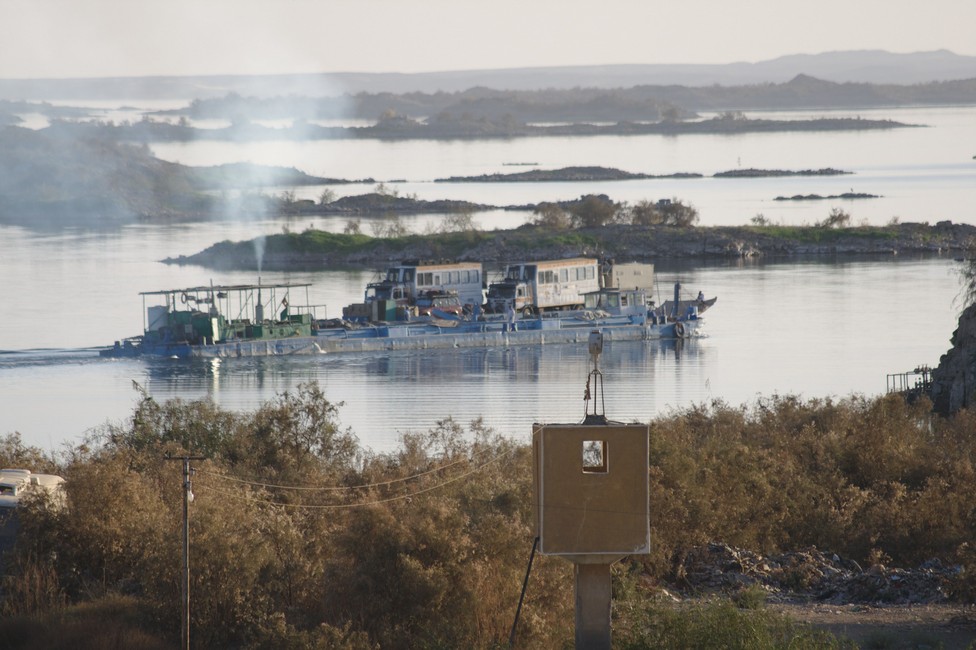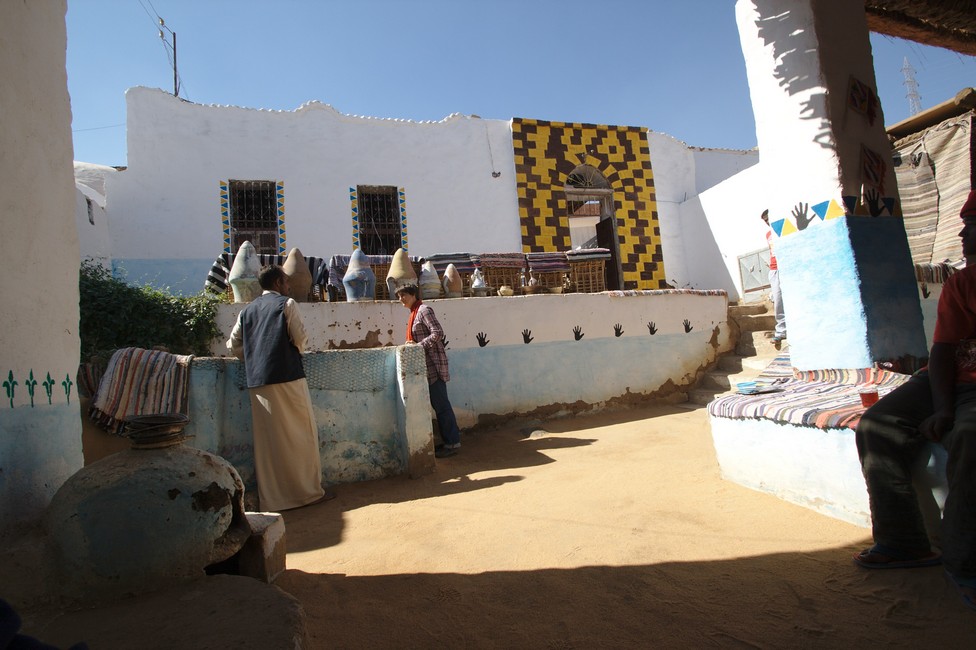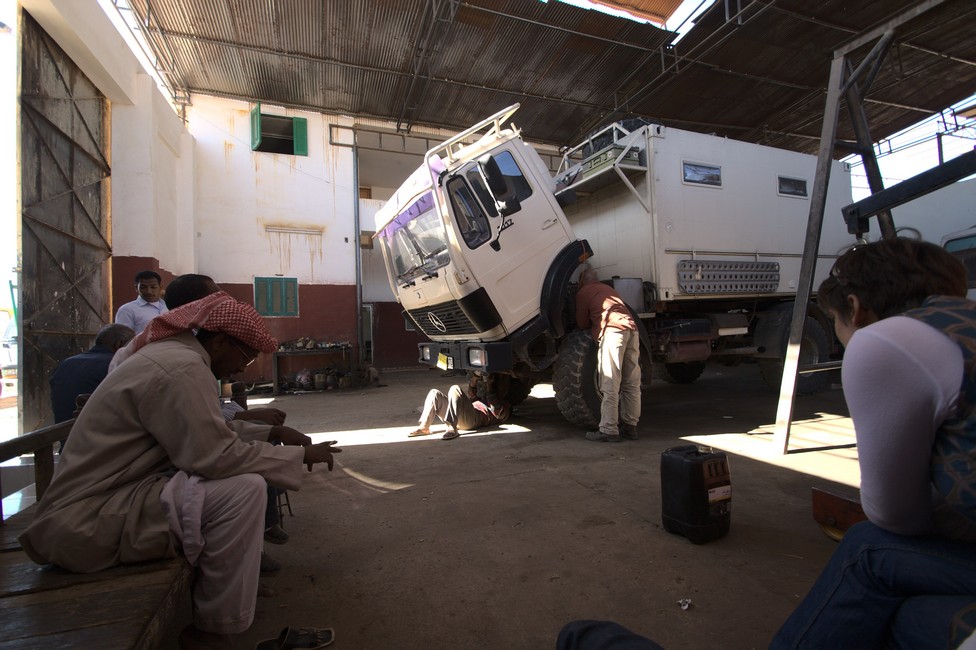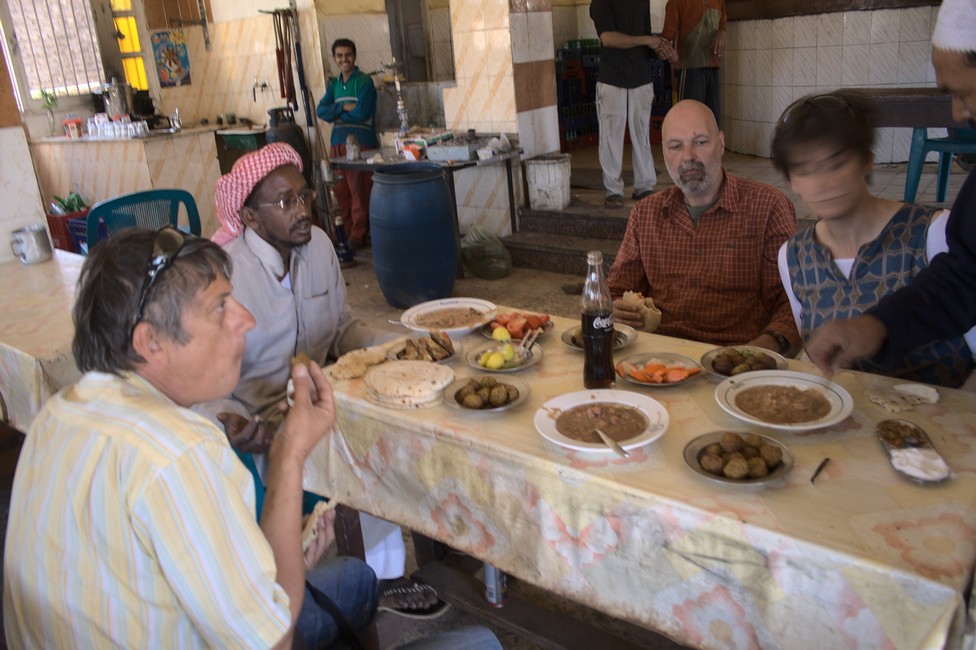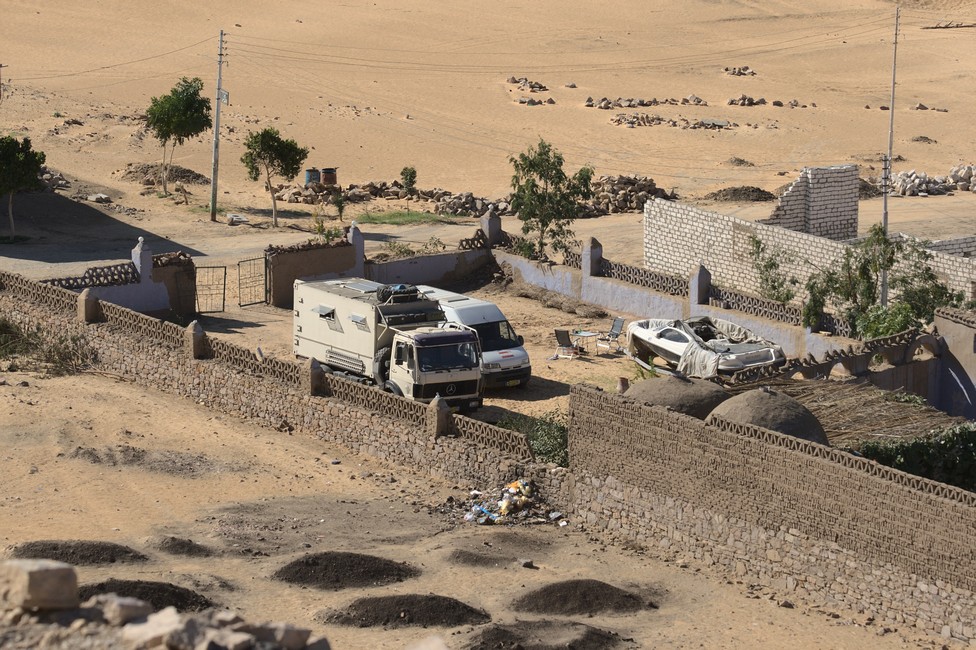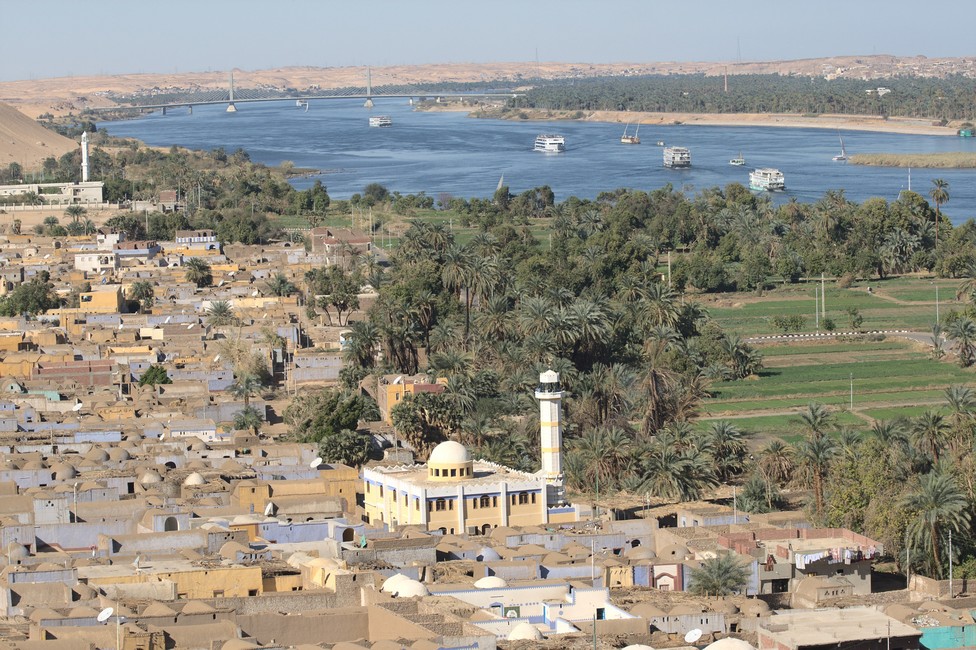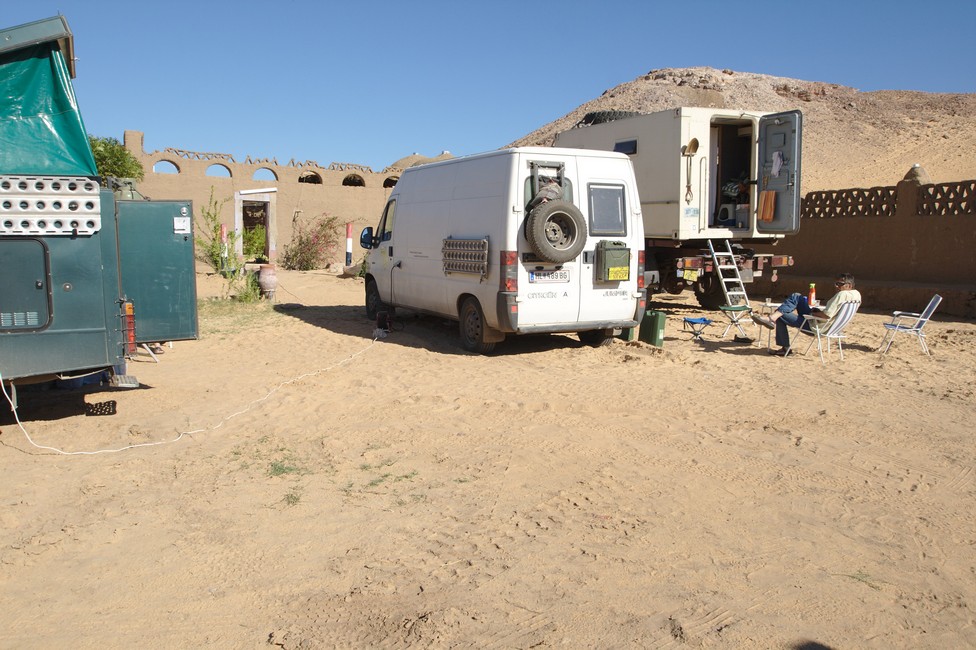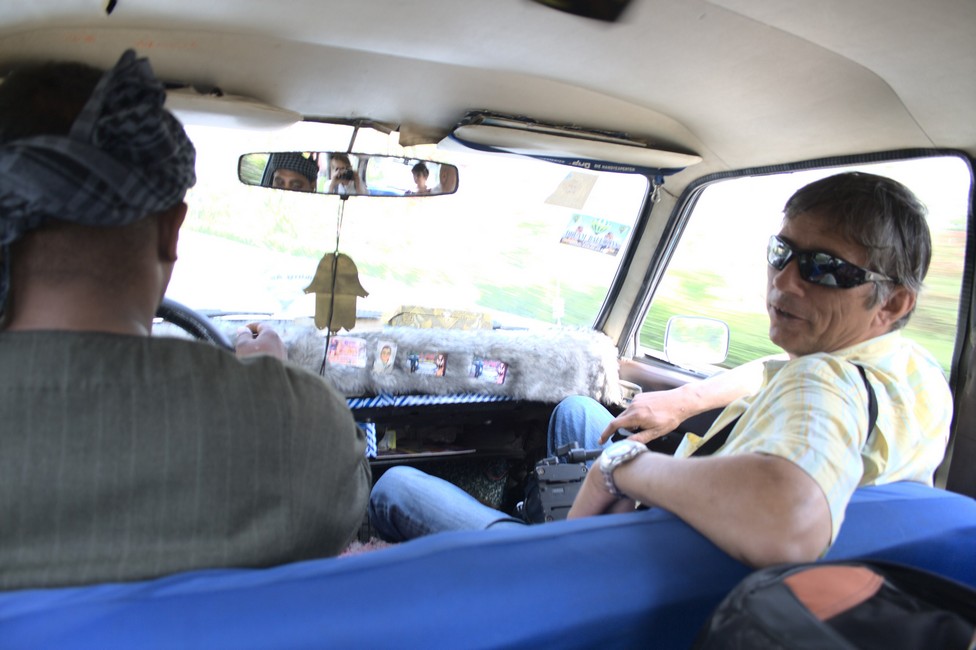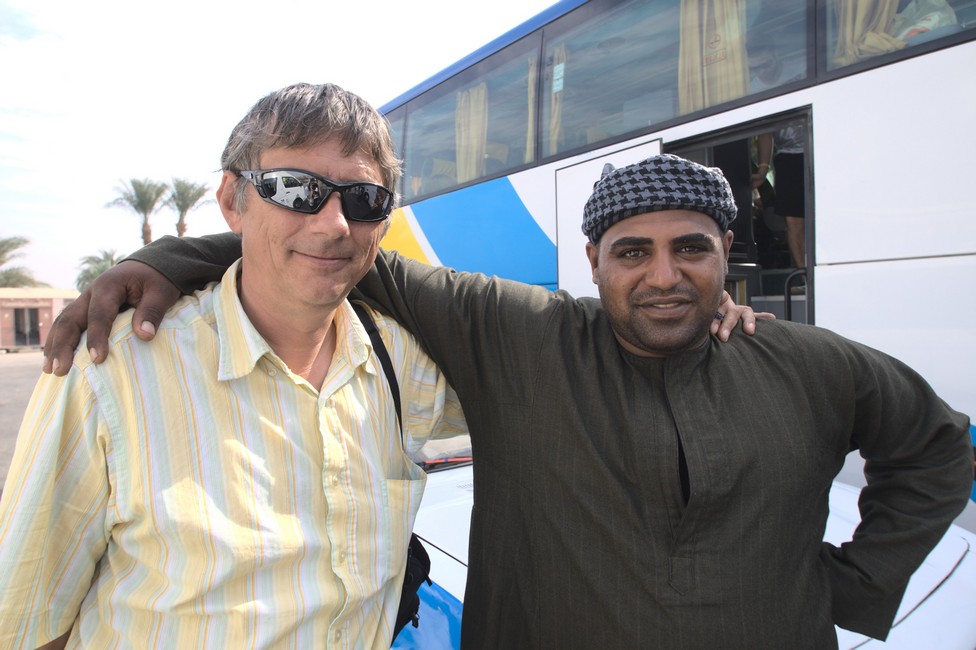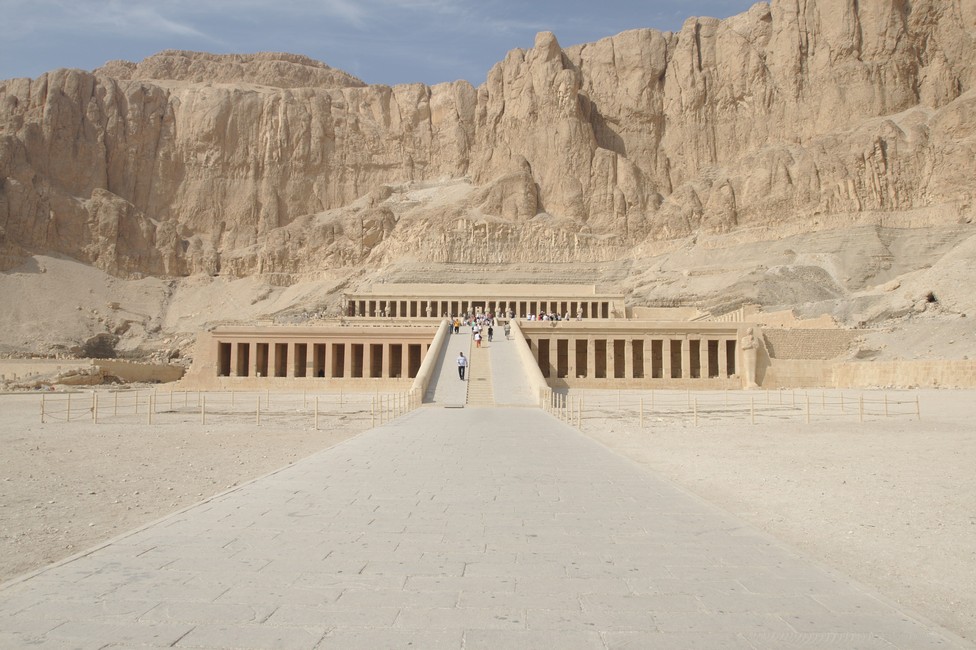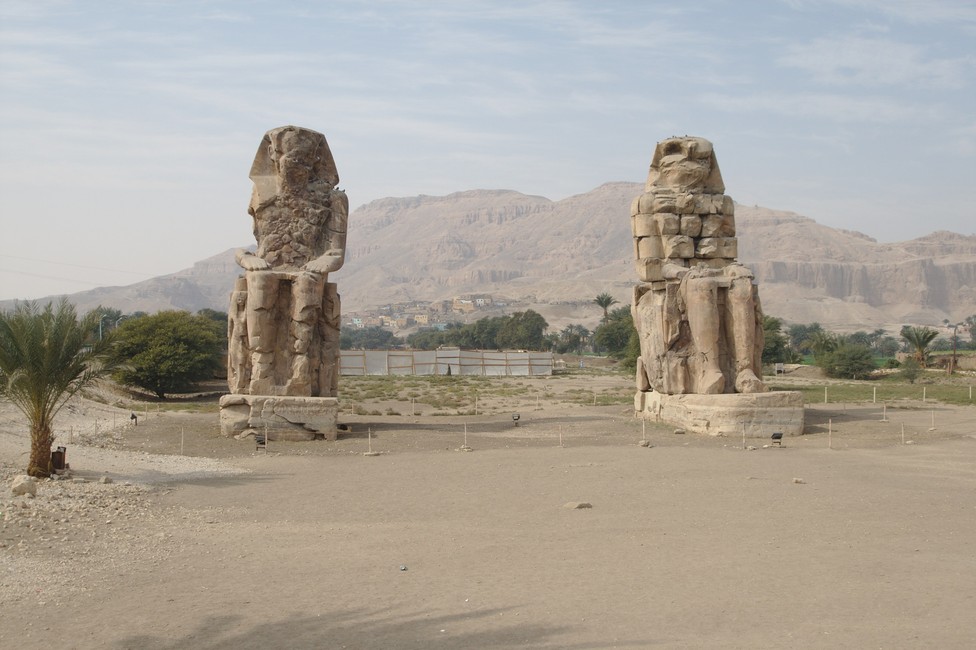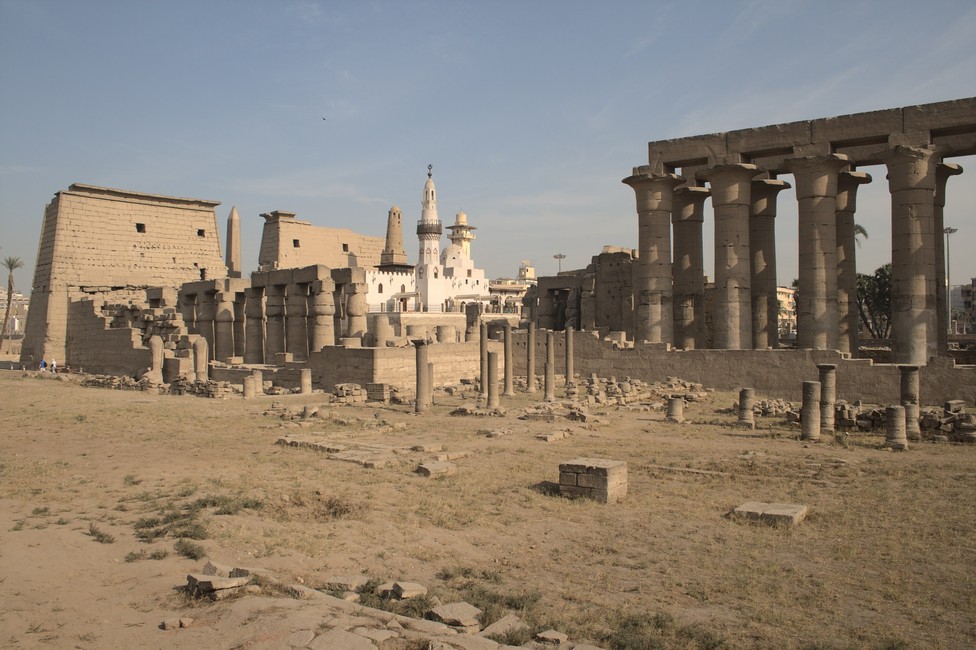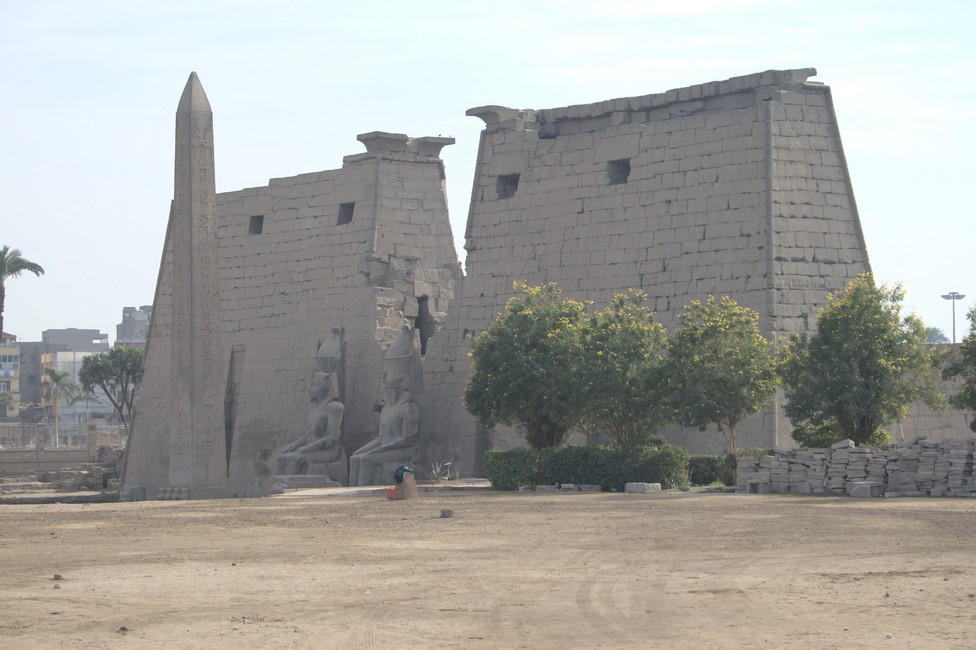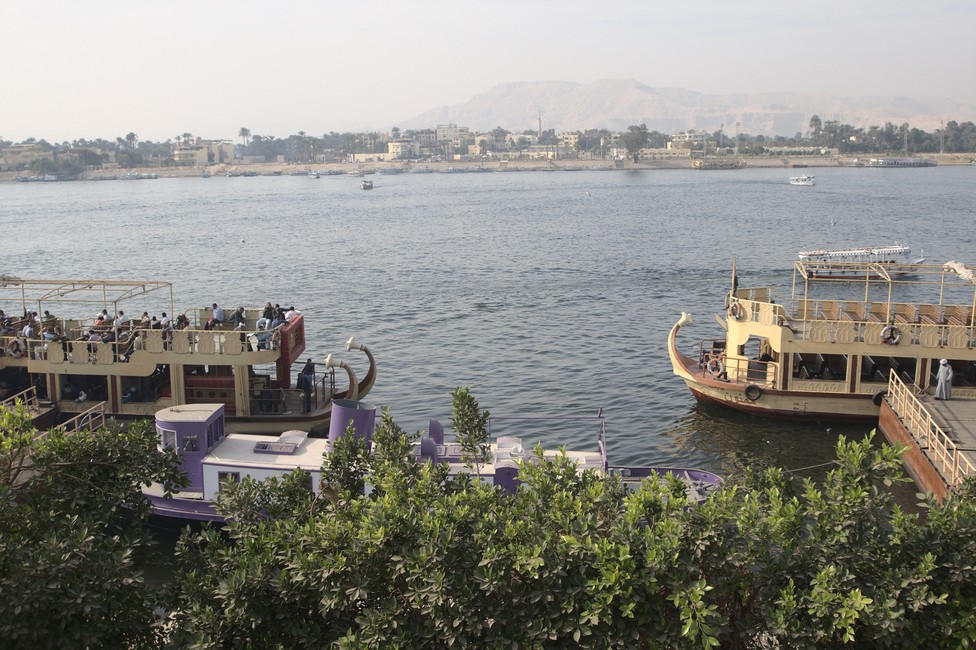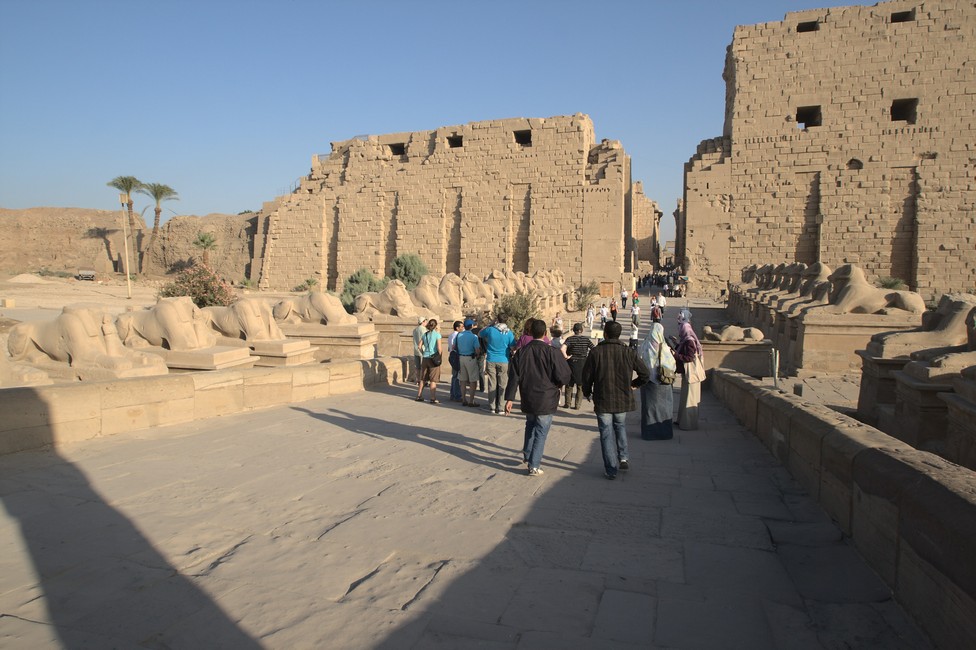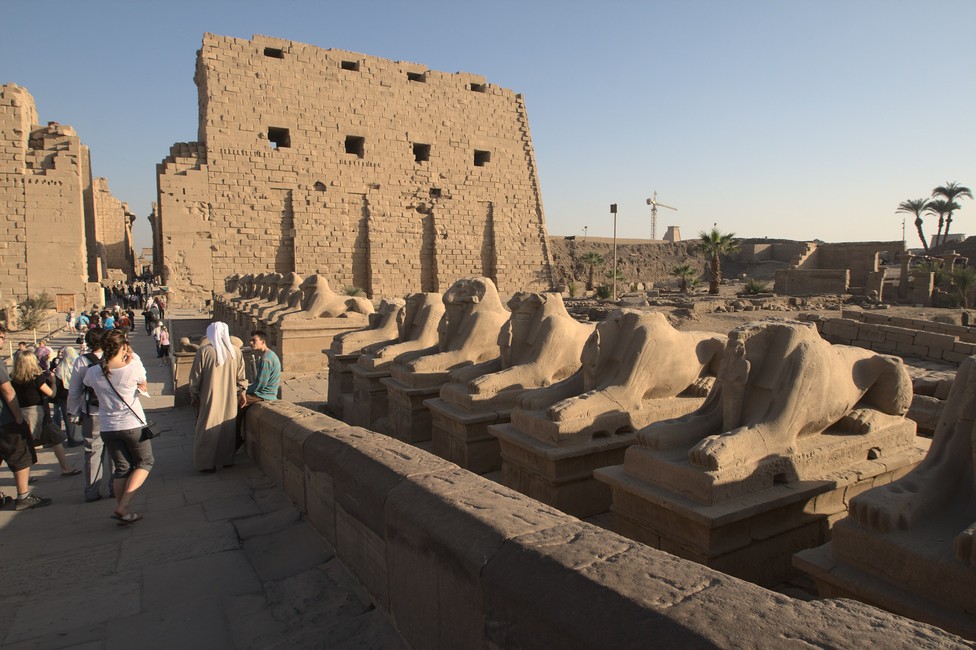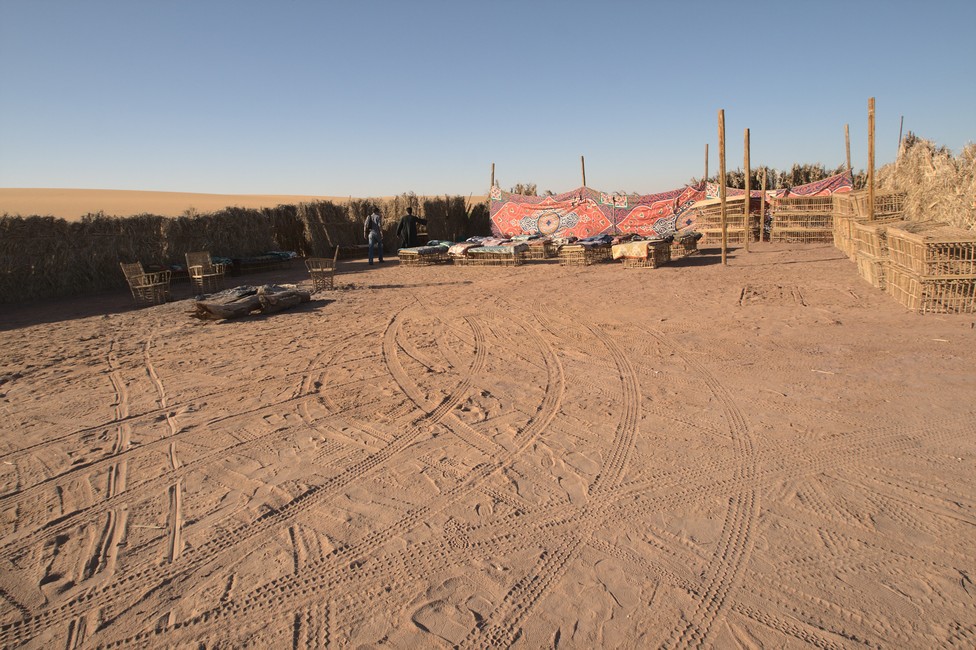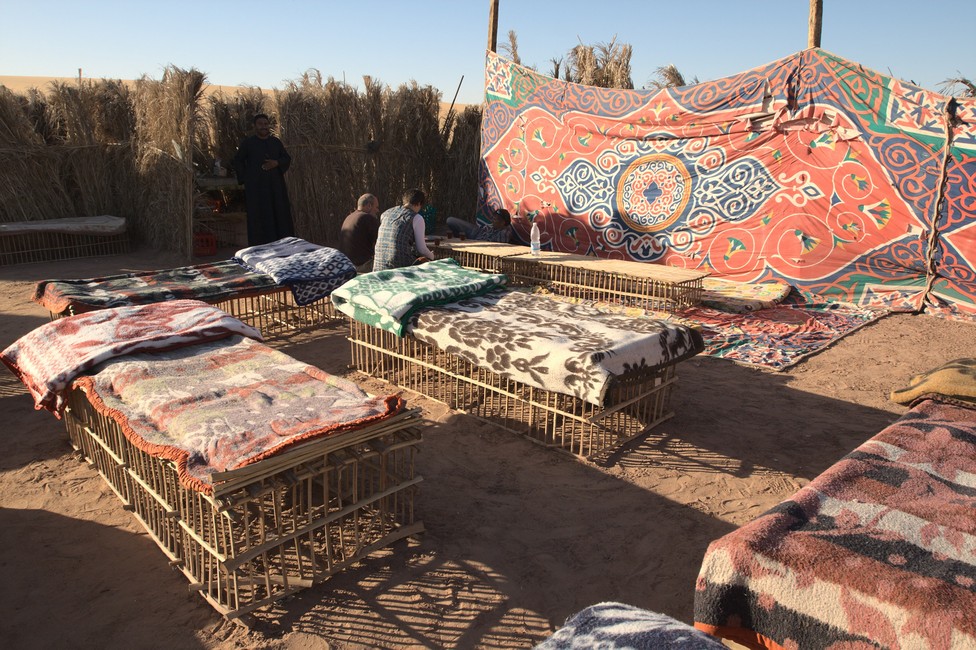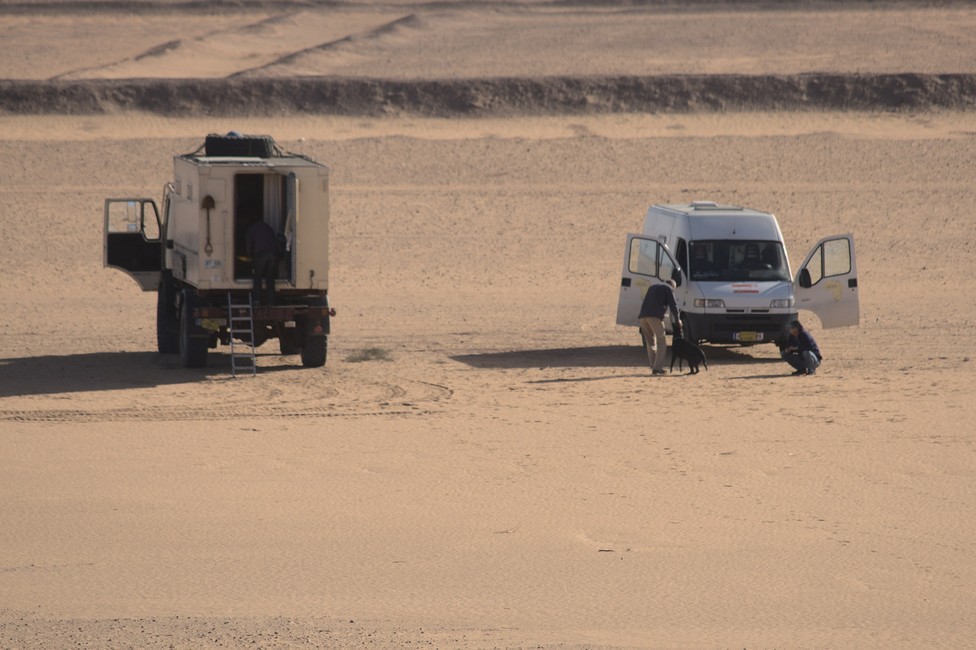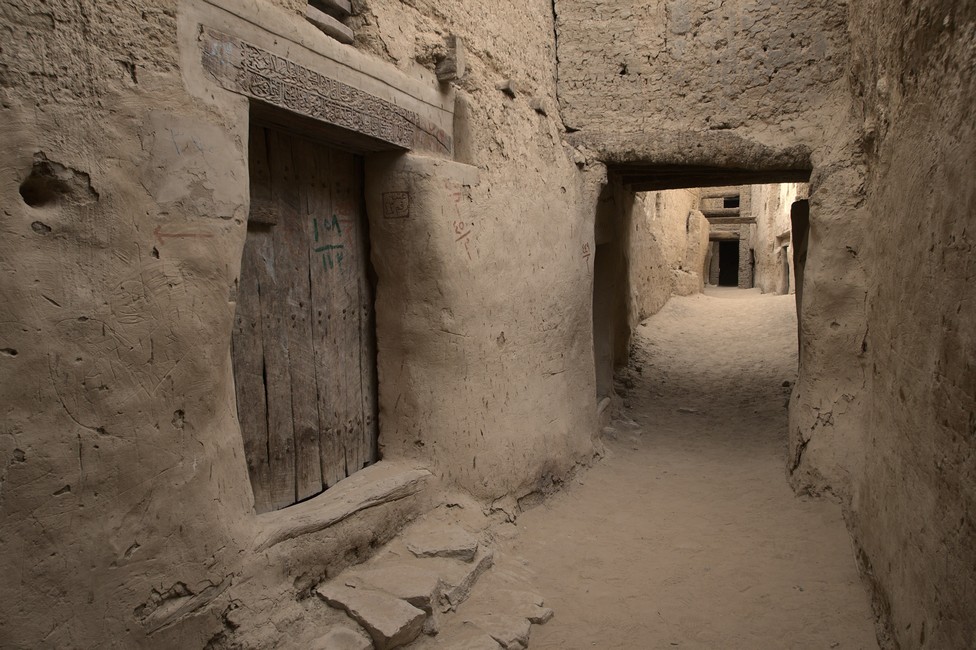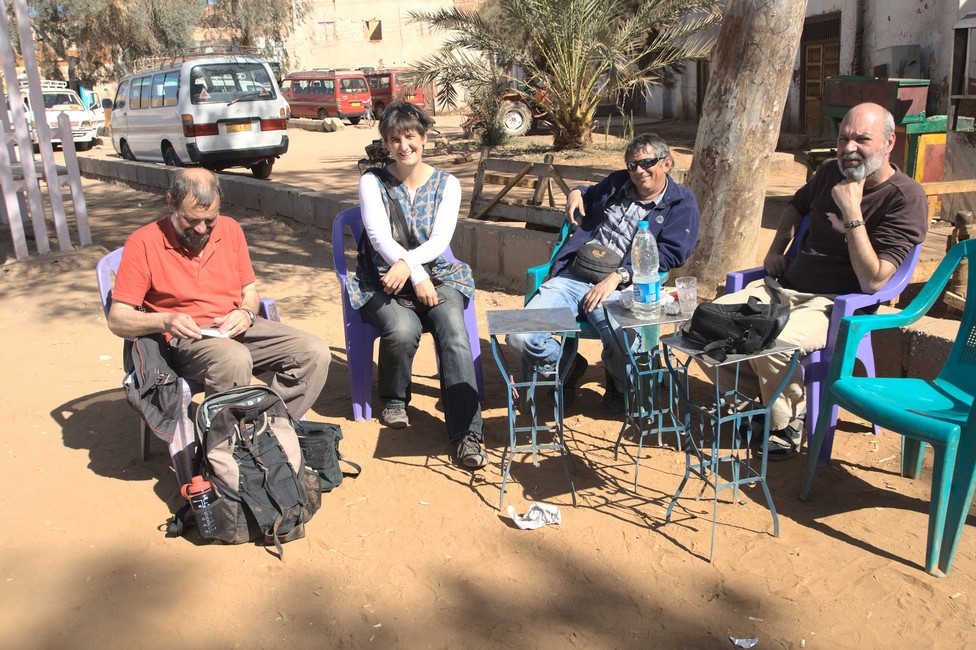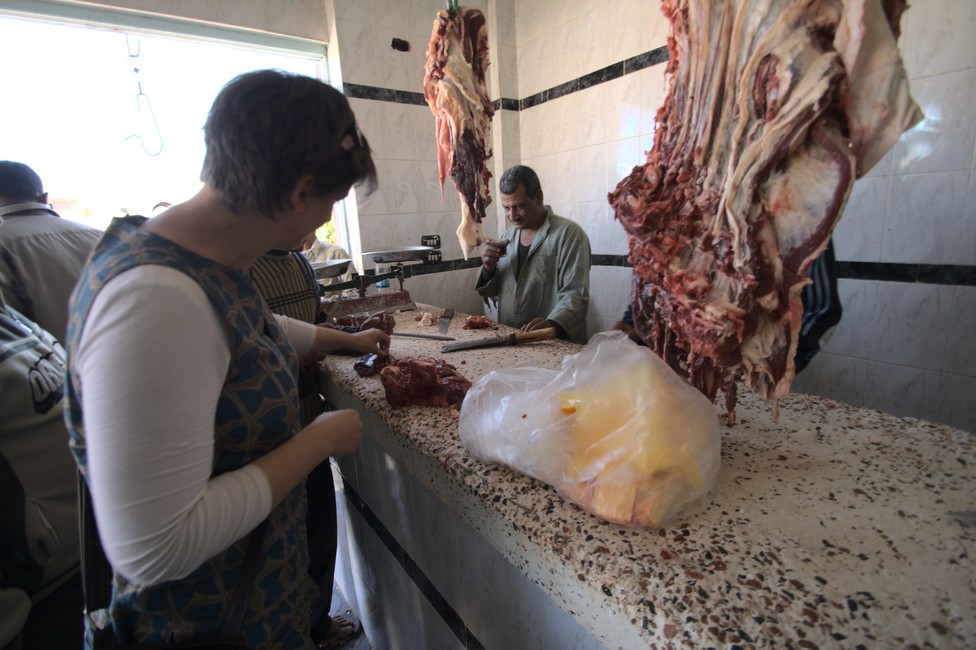In the morning we are already on board the passenger ferry to cross Lake Nasser. Lake Nasser is a result of a huge Dam built to provide water. Katzmat which is the name of the cat and Tara have been travelling so far for around a night on the lake, we will be sailing one day and one night and should arrive together with the barge at about the same time in Wadi Halfa.
The ferry is being loaded with food. On board, we meet the three English biker we met in Cairo before. They make themselves comfortable on deck. You could also book cabins, but below deck, it is certainly sticky and so we spend the ride on deck.
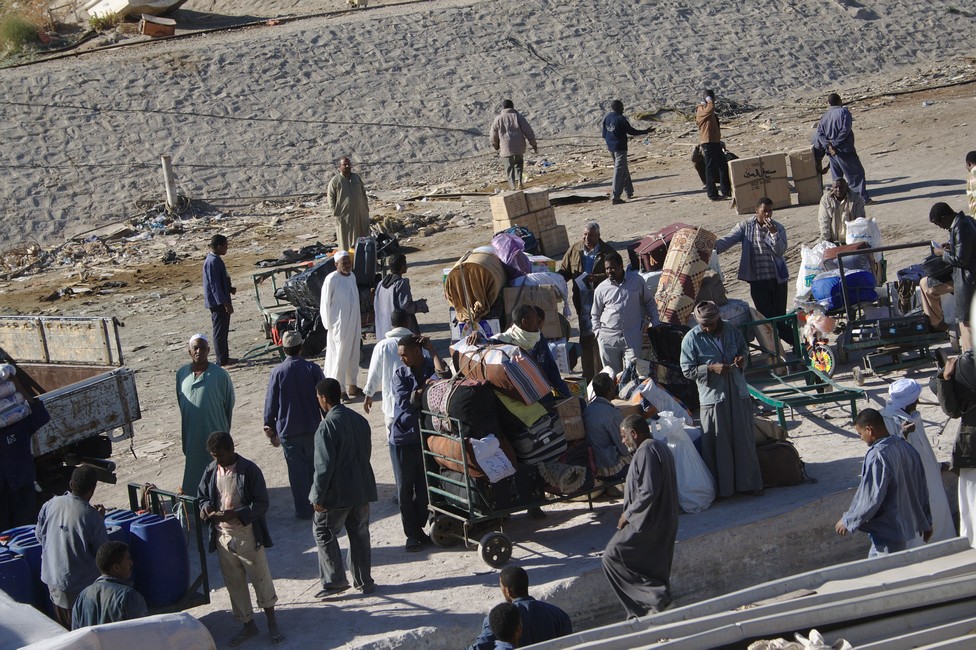
Bine and Bodo find a wind-sheltered spot behind the chimney, we make ourselves comfortable below the rescue boat, which gives some shade as the sun burns relentlessly from the sky while a cold wind is blowing.
Since the early morning hours, the ferry is loaded continuously. Especially with food, we are confident that there will be meals.
We had already to be on board in the morning to try to get places, the vessel is to depart in the evening, so we have to wait. We observe the loading of the goods and the activities on the ferry.
For lunch there is a hot meal. We are served chicken with rice, vegetables and chapati, an Arabic bread, all on a metal tray. The food is delicious and shortens our waiting time before departure.
In the afternoon the loading of the regular barge starts. This will arrive in Wadi Halfa two days after our ship’s arrival.
It has space for three vehicles loaded transversely to the sailing direction.
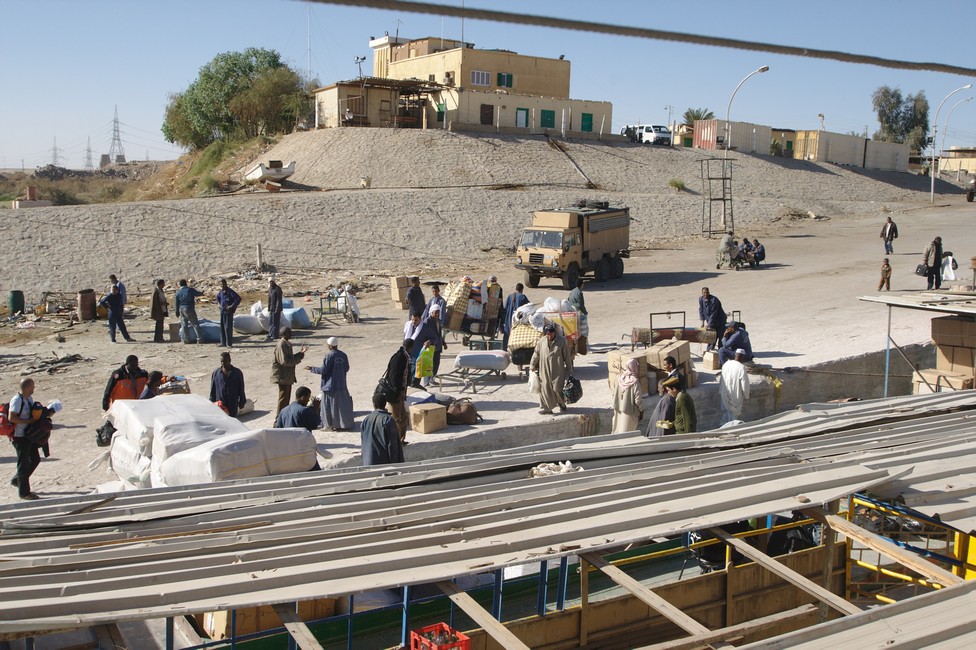
Now come the Dutch with their Toyota Hilux. All old friends. Also, the young German couple with their three-axle Volvo emerges. We have met them in Cairo. They want to get until Nairobi, park their car there, fly back to work and continue their trip to Cape Town the following year.
There are only a few lunatics who undertake this crossing of Africa, and so you know each other, you meet again and again and exchange experiences. Those who start their trip in Europe start from there in autumn, so they come during the cooler months through the desert and reach Malawi and Zambia after the big African rainy season. We have planned like that as well but it will come differently.

Meanwhile it is evening and the ferry leaves. A whole day we spent waiting on the ship. Our journey takes us further on over Lake Nasser to Wadi Halfa, the port of entry into Sudan. From Wadi Halfa we want to go along the Nile to Dongola and continue along the Nile bow, then through the desert to Atbara. From there to Khartoum, the capital of Sudan, and to Metema into Ethiopia.
Finally we have survived the night on the crowded ferry, although sleeping at the edge of the ferry close to the water without railing should not allow a pleasant sleep, but we were tired. But we were well off, had at least space to stretch and the muezzin at 5 clock in the morning was bearable.

After morning coffee, the call comes to the doctor. Yes, all passengers must undergo an examination. The doctor measures the temperature, only those with no fever may enter into Sudan. We have quite a lot of fun with the physican, he takes it on the bright side as well.

In the distance from the middle of Lake Nasser Abu Simbel comes into sight, which is still in Egypt. Light illuminates the rock in the morning light. There are two temples, the great temple of Ramses II and the Hathar temple.
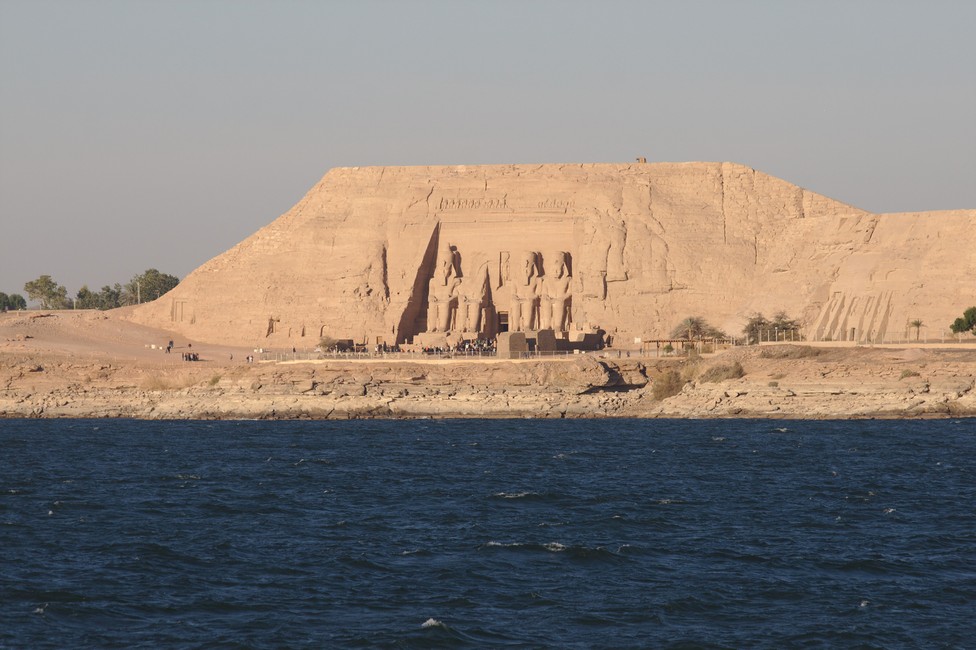
As we get closer, we can see the four seated statues of Ramses, who look majestic to the lake, earlier here was only desert, the lake was not there by then. We must hand over our passports because we approach Wadi Halfa. We can not wait getting Tara back healthy.
Suddenly in the distance we see our barge. We are trying to recognize anything. While we can see Bodo’s and our car, we cannot see Tara the distance is too far. We have to wait.
